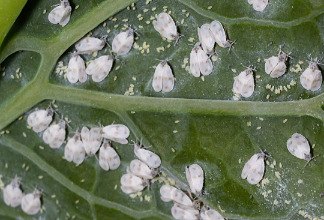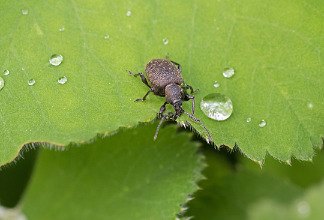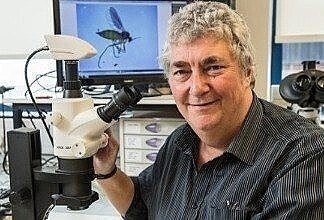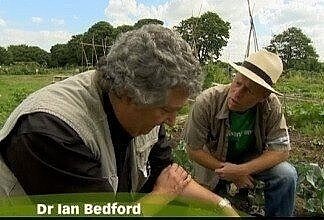
Preparing for spring: Winter pest controls
3 Minute Read
Dr Ian Bedford tells us everything we need to know about the 'bugs of the month' for January and what we can do in our gardens to safely reduce these problematic plant pests whilst they are dormant over the winter months.Controlling pests this winter
Although winter is the season when garden plants and most creatures that live amongst them are at rest and in a state of dormancy, it’s also the time of year when gardeners and growers can begin preparing for the arrival of spring, when life returns to the garden again.
By planning a new planting scheme and drawing up a list of which plants and seeds to buy for the patio pots, flower borders, and vegetable beds, whether outside or inside a greenhouse. While plans are being made, it is also worth reflecting on problems that may have been experienced in the garden over the past growing seasons and what could be done during winter to mitigate a recurrence.


Besides moving dormant plants to a more suitable location, pruning out diseased or damaged sections, and reinvigorating the soil around them with a rich organic mulch, we could also provide help to the plants that had suffered significant damage from herbivorous invertebrates (aka plant pests).
Particularly the perennials, hardy shrubs, and fruit bushes where infestations had become detrimental to the plant’s health and where control measures, whether product-based or through natural predation had been ineffective.
During the winter months, somewhere close by to the plants that had suffered from harmful infestations will be the overwintering life stages of the pests. Whether they’re eggs and pupae waiting to hatch, or larvae and adults waiting to become active again when the warmer spring weather returns, and the plants begin growing again.
By knowing this, gardeners and growers will have a window of opportunity to use some environmentally friendly methods to reduce the numbers of these overwintering pests before they become active again in the spring.
Environmentally friendly pest management during winter
Firstly, it’s important to be sure of the pest’s identity, something that could be done by searching for the affected plant’s common pests on the internet or in a reference book. This will not only provide information on the pest’s overwintering life stage but also where it’ll most likely be found.Then, using this knowledge, an appropriate method to reduce its numbers should become obvious.
For example, Vine weevil-infested pot-grown strawberries will likely have overwintering vine-weevil grubs amongst their roots, so, these could be dealt with by simply removing the plants, washing their roots, and replanting them back into new compost. Similarly, potted True lilies could have overwintering Red Lily beetle adults within the compost that could be controlled by repotting the bulbs.
But it’s not just the pot-grown plants, since some of the most damaging pests within the garden beds and borders could be tackled during their winter dormancy too, such as the common Gooseberry sawfly and the Large Rose sawfly, whose pale green and black spotted larvae feed in groups around the edge of leaves on their respective host plants during summer, often totally defoliating them.
During the winter they’ll be in the soil around the bush as pupae, waiting to hatch into winged adults in the spring. So, by hoeing through the top few centimetres of soil around the base of the affected bushes during winter, these pupae will become exposed to hungry insectivorous birds and the lethal effects of frosts.
Even in the vegetable beds, the overwintering pupae of root flies and leaf miners can be exposed to predators and frosts by regular hoeing too, whilst overwintering cabbage whiteflies and aphids could be reduced by removing the old and fallen brassica leaves.
By simply remembering which plant pests had previously caused problems and learning about their overwintering behaviour, a safe and effective strategy could be used to reduce their numbers during winter and hopefully make the following growing season a bit less problematic.

About Dr Ian Bedford
Ian has been fascinated by the bug world for as long as he can remember. From studying butterflies on the South Downs as a youngster, he went on to pursue a career in Research Entomology and ran the Entomology Dept at the John Innes Centre in Norwich up until his recent retirement.VISIT WEBSITE

'Bug of the month'
Visit our 'bug of the month' archive.Every month Ian will share his knowledge on how to protect your plants and gardens from preventable pest invasions while providing valuable insights into the insects regularly found in our gardens.
find out moreTags: Natural Pest Control
Comments (0)
Why not be the first to send us your thoughts?
Leave A Comment
Most popular articles
1
Plastic plant pots dimensions and uses2
Peat vs Peat Free - Choosing the right Potting Compost3
How to Grow Watercress at home in plant pots4
January Jobs5
Our guide to seed sowing compost